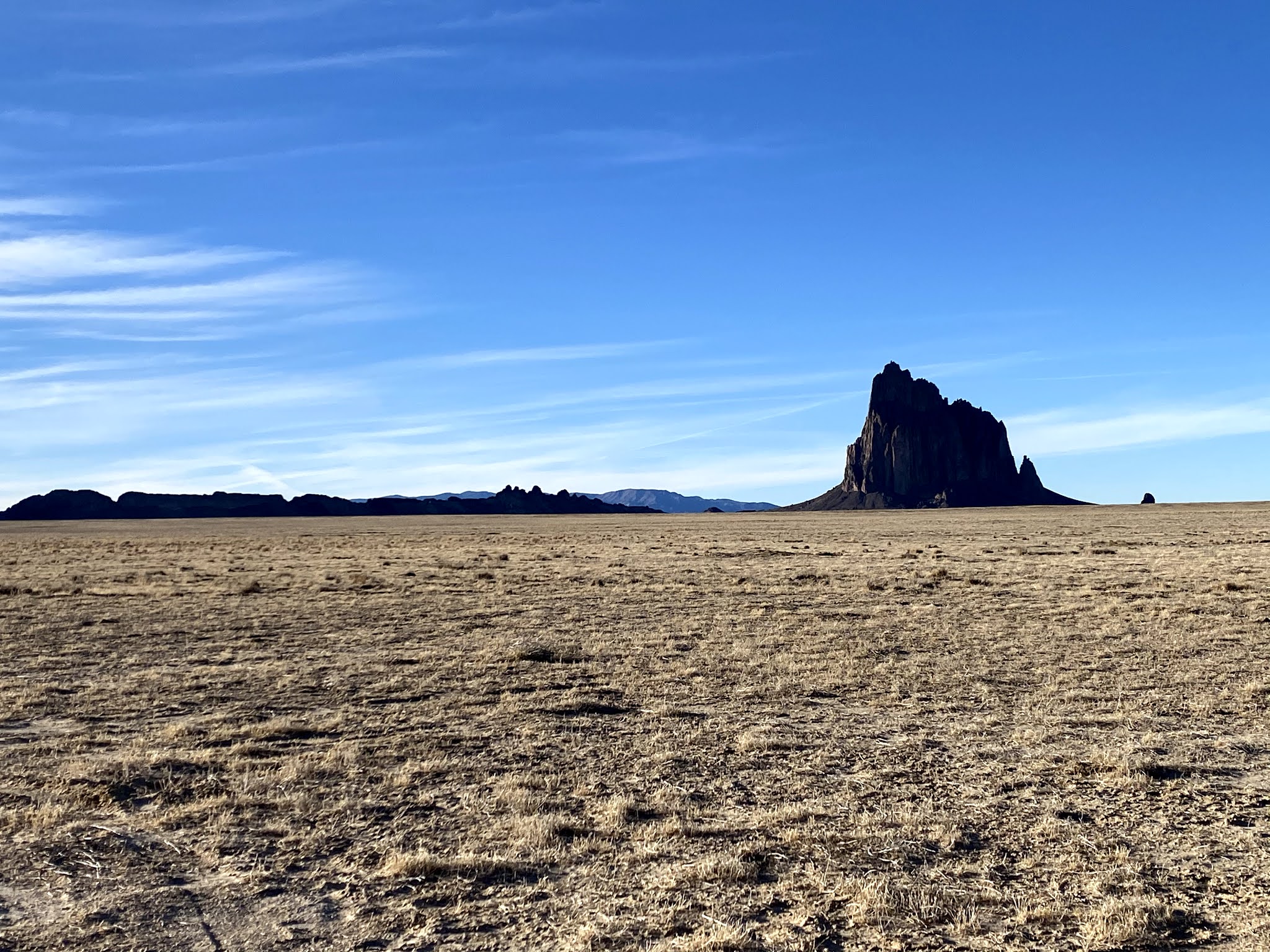Shiprock--(Update April 5, 2021)
 |
| Shiprock--January 2021 (Photo by John Carroll) |
In Haiti during the "cholera decade", I worked in three Cholera Treatment Centers and treated very sick patients who were in shock due to cholera. And most of these patients were outside in very large and very hot tents. I felt bad that I was treating sick patients outside and not inside and in an intensive care unit.
Recently, I had the opportunity to work with Project Hope and was sent to the Navaho Reservation this month in Shiprock, New Mexico which is located in northwest New Mexico in the "four corners" region of the state. We are seeing several hundred patients each day who drive into the Covid Car Clinic. Some people are asymptomatic and only requesting a test. However, many others have had a contact with Covid or are symptomatic and need to be tested. And some coming through the clinic are very ill and we admit them right away to Northern Navaho Medical Center for immediate care.
In Haiti in 2010, you would never have convinced me that I would be checking Americans in an outside facility who are suffering from an infectious disease. But here we are.
The Haitian cholera epidemic started in October 2010 after UN troops who harbored the cholera bacteria emptied their waste in a major river in central Haiti. People living downstream quickly became infected and began to die before they could get to health centers.
It did not take long for cholera to be identified as the causative microbe and it did not take long for cholera outbreaks to occur all over Haiti. Most Haitians with cholera were asymptomatic or were mildly ill and could be treated with oral rehydration with cheap packets of powder containing the right quantity of electrolytes. For the people who were unable to hold down the oral rehydration solution or who presented in shock, IVs were started, and patients received the life-saving solution.
At first, the Haitian death rate with cholera was quite high. But once the medical providers became familiar with cholera and how to treat it, the case fatality rate dropped to approximately 1 percent.
Still, in the first half of the 2010s, the Haitian cholera epidemic was the largest in the world until the Yemen cholera outbreak surpassed it in 2016. Approximately 1 million Haitians were infected with cholera and approximately 100,000 died. (I happen to think that the actual numbers are probably much higher due to the remote populations of people living in the hinterlands of Haiti and were never counted in the official tally.)
Haiti's last recorded cholera case was in 2019. And when all was said and done, Haiti had one of the largest outbreaks ever recorded in modern times.
The Navaho Reservation is located in northern New Mexico and extends into Arizona and Utah and is 27,000 square miles. The Navaho are the largest Native American tribe in the United States and has approximately 175,000 people. And Shiprock is an 8,000 person town on the periphery of the Reservation and is home to the Northern Navaho Medical Center and Covid Clinic.
Covid-19 has hit the Native American population in the United States very hard. In May, the Navaho Nation surpassed New York and New Jersey for the highest per capita Covid 19 infection rate in the United State. And Native Americans are almost twice as likely to die of Covid-19 than the White population.
The Navaho Nation has had an "uncontrolled spread" of Covid-19 during the first two weeks of January. And as of January 20, the Navaho Nation has reported a total of more than 26,500 Covid-19 cases and more than 920 virus-related deaths. However, now in the third week of January, the number of people coming to the Covid Car Clinic for testing has decreased significantly and the percent of positive test results has diminished, also.
The Navaho Nation began a "stay at home lockdown" in November and this lockdown is still in effect.
So what does Haitian cholera have to do with Navaho Nation Covid-19? Do they have anything in common?
They have much in common. Both diseases have attacked and taken a foothold in at-risk populations--poor Native Americans and poor Haitians.
According to the CDC regarding the Native Americans and Covid-19--
"Long-standing inequities in public funding; infrastructure; and access to health care, education, stable housing, healthy foods, and insurance coverage have contributed to health disparities (including higher prevalences of smoking, obesity, diabetes, and cardiovascular disease) that put indigenous peoples at higher risk for severe COVID-19–associated illness."
And the same could be said for Haitians except most Haitians don't have enough money in their pocket to spend on cigarettes.
 |
| Shiprock (Photo by John Carroll, January 2021) |
-----
The Navajo Nation, which once had one of the worst coronavirus case rates in the United States, recently reached an extraordinary milestone: zero cases and zero deaths in a 24-hour period.
The nation, which has over 300,000 enrolled members, is averaging about 11 new cases a day, far below its peak of 250 in late November, according to the latest data from the Navajo Department of Health.
And it has vaccinated more of its population than any state, with more than half of its 170,000 residents living on tribal lands fully vaccinated.

I worked with a nurse at Kayenta named Val Singer. She was the first nurse on the Navajo Reservation to die from COVID-19. She was a great ER nurse, and an even better friend. Please keep her in your prayers.
ReplyDelete